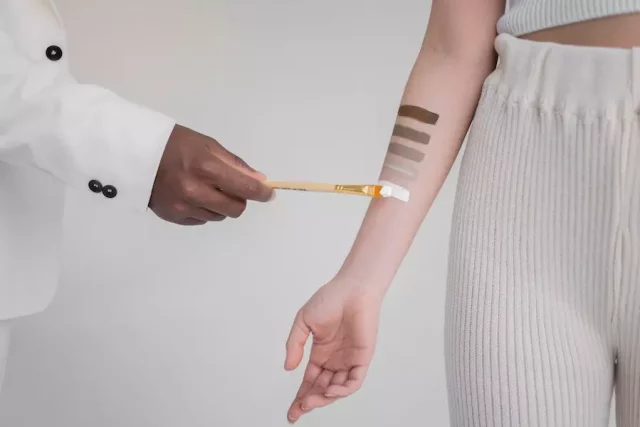Self-tanning has become increasingly popular as more people seek the perfect sun-kissed glow without exposing themselves to harmful UV rays. However, one of the biggest challenges of self-tanning is finding the right shade of tan to suit your skin tone.
With all the easy self tanning range available, If you go too dark or light, you risk looking fake or unnatural. Here are some tips to help you find the right shade of tan to suit your skin tone.
Understand Your Skin Tone
The first step to finding the right shade of tan is understanding your skin tone. Skin tones are generally categorized as fair, medium, or dark.
Fair skin has pink or peach undertones, medium skin has a neutral tone, and dark skin has a warm or olive undertone. Knowing your skin tone is crucial in determining the right shade of tan for you.
Choose The Right Product
Choosing the right self-tanning product is also essential. Several self-tanners, sprays, lotions, mousses, and gels are available.
Each type of self-tanner has a different consistency and formulation that can affect the final color of your tan. Some self-tanners have added skincare benefits, such as moisturizing or anti-aging properties, which can help achieve a natural-looking tan.
Start With A Lighter Shade
If you’re new to self-tanning, it’s best to start with a lighter shade and gradually build up to a darker shade. This will help you avoid any mistakes and achieve a more natural-looking tan.
Starting with a lighter shade also lets you see how the product reacts to your skin tone and whether you need to adjust the hue accordingly.
Consider Your Undertones
When choosing a self-tanning product, it’s essential to consider your undertones. Undertones are the subtle colors beneath the surface of your skin that can affect how a self-tanner looks on your skin.
For example, a self-tanner with a yellow or orange base can enhance your natural glow if you have warm undertones. On the other hand, if you have cool undertones, a self-tanner with a green or violet base can help neutralize any redness in your skin.
Don’t Forget To Exfoliate
Exfoliation is an essential step in achieving a natural-looking tan. Dead skin cells can cause self-tanner to cling unevenly to your skin, resulting in a patchy or streaky tan. Before applying self-tanner, exfoliate your skin using a gentle scrub or mitt to remove dead skin cells.
Apply Self-Tanner Evenly
Applying self-tanner evenly is crucial in achieving a natural-looking tan. Start using the product on your face, arms, legs, and body in sections.
Use a tanning mitt or gloves to blend the product evenly into your skin, making sure to pay attention to any areas prone to streaking, such as your elbows, knees, and ankles.
Take Time To Dry
Once you’ve applied the self-tanner, give it time to dry completely before getting dressed or using any other products. This will help prevent the self-tanner from rubbing off onto your clothes or sheets and ensure a more even tan.
Conclusion
Finding the right shade of tan to suit your skin tone is crucial in achieving a natural-looking glow. By understanding your skin tone, choosing the right product, considering your undertones, exfoliating, and applying self-tanner evenly, you can perform a beautiful, sun-kissed tan without exposing your skin to harmful UV rays. Remember to start with a lighter shade and gradually build up to a darker shade, and remember to take your time and enjoy the process!













